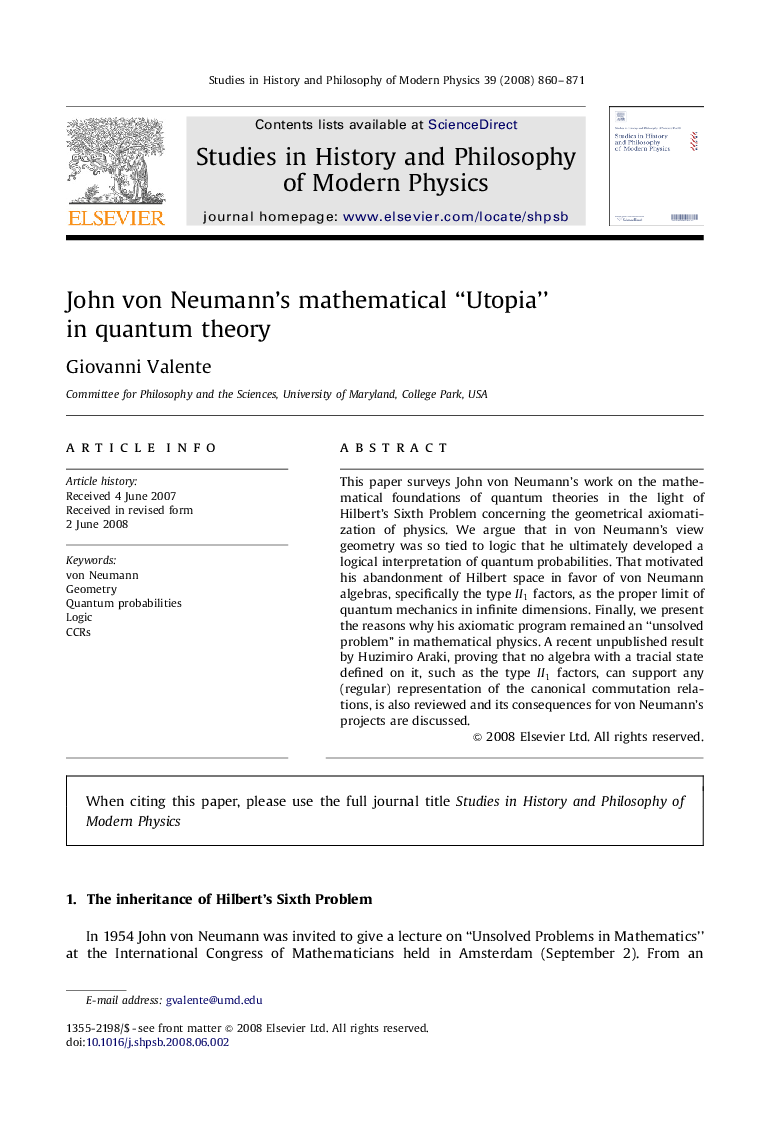| Article ID | Journal | Published Year | Pages | File Type |
|---|---|---|---|---|
| 1161084 | Studies in History and Philosophy of Science Part B: Studies in History and Philosophy of Modern Physics | 2008 | 12 Pages |
This paper surveys John von Neumann's work on the mathematical foundations of quantum theories in the light of Hilbert's Sixth Problem concerning the geometrical axiomatization of physics. We argue that in von Neumann's view geometry was so tied to logic that he ultimately developed a logical interpretation of quantum probabilities. That motivated his abandonment of Hilbert space in favor of von Neumann algebras, specifically the type II1II1 factors, as the proper limit of quantum mechanics in infinite dimensions. Finally, we present the reasons why his axiomatic program remained an “unsolved problem” in mathematical physics. A recent unpublished result by Huzimiro Araki, proving that no algebra with a tracial state defined on it, such as the type II1II1 factors, can support any (regular) representation of the canonical commutation relations, is also reviewed and its consequences for von Neumann's projects are discussed.
